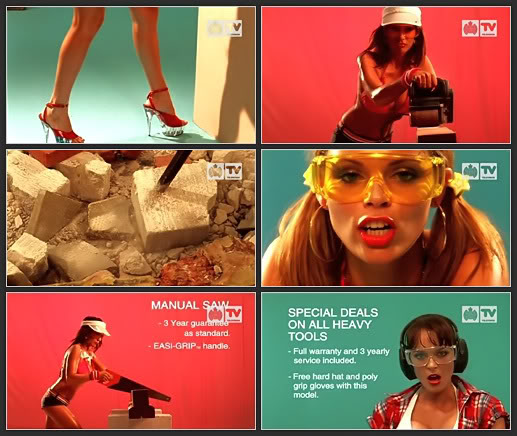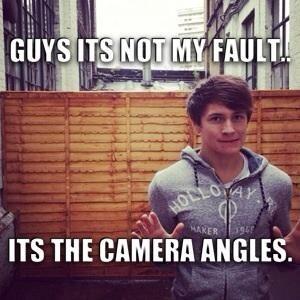This interview of Suzy Davis shows her transition from an A-level media student to “the editor of a number of the most acclaimed and inventive music videos of recent years” Suzie Davis is most commonly know for her creative editing work on Benny Benassi’s, ‘Satisfaction’ which was “the most played video on MTV in 2003”. Her talents in the media industry were also highly recognised through her editing of ‘The Streets’ song ‘Fit but you know it’. Through these editing opportunities “Suzy has become one of the most respected editors around.”
Below is a video of Suzy Davis’ work on the promo video ‘Satisfaction’.
The Questions asked within the interview are as follows:
How did you get from being an a level media student to being a music promo editor?
What was your ‘breakthrough’ music promo editing job?
Describe a typical job working on a promo as an editor
How regular is work as an editor?
Is the pay enough to live on?
How much creative freedom do you get?
What difference is there for you in editing promos to other kinds of jobs such as ads, trailers etc.?
Have you ever edited something that has the not been used?
What’s your favourite kind of job?
Which of your videos are you most proud of?
What advice would you give to students editing their own videos?
And for students thinking of editing as a career?
Below are a selection of the questions asked which I feel most benefit my research from this secondary resource and therefore the information is relevant to my work and will impact upon creative techniques when creating a music video:
1) How did you get from being an a level media student to being a music promo editor?
Suzy Davis explains within her answer to this question her journey to becoming a music promo editor, within this answer we learn that Suzy Davis went to Reading University where she studied Italian with film studies, which was a “theoretical rather than practical course”. Through this course she commented that she learnt “the impact of sound & editing” and that “Everything appears so natural and organic when you watch a film” which enticed her to learn further into the hidden creative process that go into editing.
Over the years with Final Cut she went from runner to assistant editor over the nine years. And “On leaving uni I (Suzy Davis) sent out over 200 CVs – work experience, I found myself in production at LWT for a bit then finally in post production where I realised my true interest lay.” this quote shows her dedication to her job and her aspiration to achieve and progress which aided her editing career.
Her career path then resulted in a long apprenticeship, “first as a runner for two years and then an assistant editor for three years”. Which enhanced her learning skills over multiple aspects of editing “including quoting and invoicing as well as cutting… I began to form my own client base and was finally promoted to editor about four years later after showing my boss a music video I had edited” This music video was for ‘The 80s matchbox B-Line Disaster’ directed by Edgar Wright. The video then went on to be nominated for best rock video at the music vision CADS awards that year. Showing a successful career in being a music promo editor.
2) What was your ‘breakthrough’ music promo editing job?
The music promo editing job which Suzy Davis undertook which resulted in her ‘breakthrough’ was for “a new director Dougal Wilson in 2003 for a dance outfit called Benny Benassi”. For this promo video Suzy Davis was highly recognised by multiple directors and record companies as “I (Suzy Davis) received a ‘Best editing in a video’ nomination at the CADS for this and it was only my first year as an editor”. However Suzie also commented that within her first year she also edited “a total of 36 promos (many for obscure bands never seen since!)”. Showing how 1 video within the 36 made her career and boosted her status in the media industry.
Suzy Davis also commented that “For the ‘Satisfaction’ video there was no storyboard, just some outrageous footage and the instruction to make it work and make it funny. I had a lot of freedom.” which shows how creative Suzy Davis would have been when editing and cutting during the creating of this music promo video to create such a successful and recognised video.
3) Describe a typical job working as a promo as an editor
Suzy Davis answered this question with by talking through her work routine and giving some insight into jobs and parts of her job which impact upon deadlines, productivity and the overall success of the promo video she is working on.
Below are bullet points summarising the main points mentioned within the interview giving some insight into Suzy’s personal opinions of some tasks and jobs which occur in her typical job working as a promo editor:
- A typical day starts at 10am – Suzie then checks all her rushes have been loaded and binned correctly by her assistant.
- Suzie begins the selection process. – For an average promo (3 hours of rushes) this usually takes a whole working day.
- At the end of each day Suzie “hopes to have a rough assembly of all the best performance moments”.
“As a rule of thumb I always try and let a good performance bed down first and then start to introduce any narrative elements as a second layer once I am happy with the performance.”
- The director usually joins Suzie on the second day – “we will work together trying shots in different places and maybe re-structuring the edit. Things always work out differently once you start cutting, changing takes and so on.”
“I also often find myself doing quite a lot of heavy effects work building scenes using green screen and matting people and objects into the scene, as we did to super impose Will Young’s head onto Simon Groom’s Body!
I basically create as near as possible the finished article in terms of effects work so that the online operator has a good guide to follow.”
- By the end of the third day Suzie and the Director present the cut to the artist, management and record company. – “I will then do any changes with the artist in the room along with the director.”
Suzy Also commented that “A big part of my job is pleasing all parties involved in the project. You find yourself having to be very diplomatic and trying any suggestion that is thrown at you from the sofa no matter how absurd, while all the time trying to remain loyal to your immediate client, the director.
Sometimes this can become rather tense and bust ups between record companies and directors are not unknown in the edit suite, although thankfully they are not that frequent. You can have a situation where different people have different agendas and its possible to have fifteen people in the room each wanting different things.
You just have to stay calm and try to get them to see sense. The worst thing is often if you let someone take the DVD of the rough cut home. Next thing you know they are phoning up to say their wife doesn’t like this bit and wants you to change something. Some artists are very good and trusting, like Will Young, who is very intelligent about his videos. Lesser known bands can quibble a bit more.”
This overall question combined with these quotes and basic structure of Suzy’s work on a project shows how creative she must be as an editor as well as “diplomatic” when dealing with artists and record companies to ensure the final product meets the preferred criteria the artist request. Whilst attempting to create an engaging and successful media product.
Below are other examples of Suzy Davis’ successful music videos ‘Music Pieces’ – Sony Walkman, followed by Dizzee Rascal’s ‘Dream’:
4) How much creative freedom do you get?
Within the interview Suzy Davis commented “It really varies from job to job”. From the interview it is obvious that there are different strategies and views that directors take when approaching Suzy Davis to edit their promo videos:
- Sometimes the director gives Suzy more creative freedom “I am told ‘ignore the storyboard and do whatever you think’ and left on my own for three days”, which shows the level of freedom and independent work Suzy can be given for some tasks.
Whereas in other tasks:
- Suzy commented that other times “A director will be over my shoulder from the first morning placing shots accurately in storyboard order.” which shows how there is a limit to the creative freedom on some jobs.
She also commented that “In this second scenario I will probably try editing other options on my own and present them when the job progresses a little further.”
Additionally “The important thing I (Suzy Davis) try and remember that the director employs you for your vision and creative input, they want to see your take on things and the journey of the edit can be fascinating. It really is a place where the unexpected can work brilliantly, whereas the shots the director had in his or her head originally might not.” This shows the impact that Suzy’s creativity and ideas can have upon various pieces of work, when working with or without directors, to ultimately create a successful promo video.
5) What advice would you give to students editing their own videos?
“Keep it simple”
Ultimately from Suzy Davis’ response to this question the overall message was “Keep it Simple”. She also commented that students should avoid “any complicated narrative” and that they should carefully “Think about how you can use your lighting to create simple effects in camera.” This is helpful as a secondary resource as this advice gives me a further insight into how I can incorporate lighting into the planning and creation of my own music video.
Suzy also commented “If your shots don’t look as good as you’d hoped, there are tricks you can use which professional editors do have to resort to: the colour grading tool can be applied to every shot, you can drop in flash frames for effect, or even link two boring looking shots more interestingly by flipping one upside down or creating some kind of interesting movement.” This advise, with information on techniques such as “colour grading” helps give advise towards the technical elements that are essential in creative a successful and engaging music video.
Overall throughout the entirety of this interview I have gained helpful information and advice, as well as an insight into the physical processes which go into the editing of a music promo video, which will help enhance my skills towards editing and creating my own music video in the future, which shows the effectiveness of this interview as a piece of secondary research, as well as an engaging insight into the career path of the successful editor Suzy Davis.






